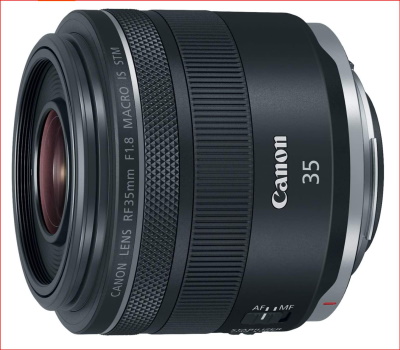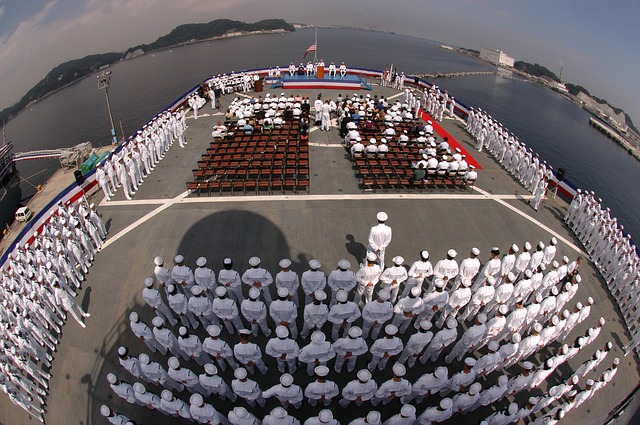In recent years there has been massive growth in Canon’s new-generation RF lens range. These lenses are designed for Canon EOS R series mirrorless camera bodies. If you consider upgrading to the Canon RF range for your full-frame mirrorless, we will help you get the best prime lens according to your need.
In this article, we will provide a list of our recommendations for Canon prime RF lenses. First, let us discuss briefly some related concepts like what is Canon RF mount, the advantages of using prime lenses, and the different types of autofocus motors.
Canon RF mount
The RF mount was announced by Canon in September 2018. It is a mount designed for its full-frame mirrorless interchangeable-lens cameras, and for RF Mount APS-C Cameras.
RF mount is characterized by its wide 54mm diameter and short 20mm flange-back distance, which promotes the ability to design lenses that are both faster and smaller than their SLR equivalents. The RF mount has a 12-pin connection between the camera and lens, compared with 8 pins in the previous EF mount. This enables much faster communication between lens and camera.
What is an RF lens?
RF lenses feature the RF mount which is designed for Canon EOS R series mirrorless bodies. These lenses work on the full-frame EOS R series bodies like the EOS RP, EOS R, EOS R6, EOS R5, EOS R5 C, and EOS R3. They are also compatible with APS-C EOS R series bodies like the EOS R7 and EOS R10. This is often recognised by a red line on the camera body and lens.
The RF lenses feature many advantages such as:
- Superior image quality and sharpness
- Faster communication between the lens and the camera body
- Powerful Image stabilizer
- It has a lens control ring that offers customisable control over shutter speed, ISO, or exposure compensation.
- Compact size
What is a prime lens?
A prime lens is a lens with a fixed focal length (fixed angle of view) and typically comes with a maximum aperture of f/1.2-f/2.8. They’re very good for photographers who want the best optical quality and prefer a shallower depth of field in their images. Popular prime lens focal lengths are 35mm, 50mm, and 85mm.
They don’t have a zoom ring and can’t provide optically magnified views of a scene like a zoom lens does. Because a prime lens has a single focal length, you can only change your field of view by getting nearer or farther from your subject, this changes the appearance of your photo by altering your perspective.
What are the advantages of using prime lenses?
There are three advantages that make prime lenses worth the money. This lens features better image quality and improved performance.
The design of Prime lenses has a major feature that is not possible with zoom lenses. Simply, they don’t need all the extra complicated lens elements that zoom lenses do. So, prime lenses have the following advantages:
- They’re sharper, even at their widest aperture, and they don’t have the same issues with chromatic aberrations, barrel distortion, or pin cushion effect that zoom lenses do.
- They have a larger maximum aperture. That means more light can enter your camera, allowing you to shoot in low-light situations, and use faster shutter speeds.
- They are more compact, have less weight, and generally cost much less as they contain much less glass compared to zoom lenses
Types of the autofocus system
The requirement of an autofocus system is quite different when you are using the camera for photography or when you are shooting a video. For normal photography situations, you need a fast and accurate focusing system, however, when shooting videos you need a smoother and silent autofocus system.
Generally, there are two different types of autofocus systems used in Canon lenses: USM (Ultrasonic motor), and STM (Stepping motor)
The STM motor allows the lens to focus smoothly and quietly. The smooth autofocus creates natural and seamless-looking footage so you get clean transitions when moving between subjects or when focusing from the foreground to the background. Additionally, the STM’s near-silent focusing, allows you to record without introducing the motor sound into your video track.
The USM is well known for its extremely fast autofocus, but it is not quite. Recently designed Nano USM combines the speed and precision of USM motors when locking focus onto a subject, with the silent actions of the STM motors.
Best Canon RF Prime Lenses
Canon RF16mm F2.8 STM
Great for landscapes, interiors, architecture, and large group photos.

The Canon RF16mm F2.8 STM is an ultra-wide-angle prime lens, it is designed for use with full-frame Canon RF-mount mirrorless digital cameras. It has a bright f/2.8 maximum aperture suits working available lighting conditions, helps control depth of field, and contributes to a sleek form factor.
Its optical design includes one aspherical element that helps control distortion and promotes a high degree of sharpness. Besides an applied super spectra coating to minimize flare and ghosting for improved contrast and colour fidelity when working in strong lighting conditions.
This lens has a stepping motor (STM) that offers fast, quiet, smooth, and accurate autofocus performance that is ideal for video recording as well as still shooting. And its minimum focusing distance of 5.1″, along with a maximum magnification of 0.26x, makes this a unique option for close-up shooting while retaining a great depth of field.
Finally, the lens has a configurable control ring which can be used to adjust a variety of exposure settings, including aperture, ISO, and exposure compensation.
Pros & Cons
| Pros: | Cons: |
|---|---|
| Compact | High distortion |
| Affordable | Heavy vignette |
| Accurate focus | Has chromatic aberrations |
| AF eye tracking for vlogging | Corners aren’t sharp at wide apertures |
| High magnification | |
| Good center sharpness | |
| Excellent flare resistance |
Specification
| Focal Length | 16mm |
|---|---|
| Maximum Aperture | f/2.8 |
| Minimum Aperture | f/22 |
| Lens Mount | Canon RF |
| Lens Format Coverage | Full-Frame |
| Angle of View | 108° 10' |
| Minimum Focus Distance | 5.1" / 13 cm |
| Maximum Magnification | 0.26x |
| Optical Design | 9 Elements in 7 Groups |
| Diaphragm Blades | 7, Rounded |
| Focus Type | Autofocus |
| Image Stabilization | No |
| Filter Size | 43 mm (Front) |
| Dimensions (ø x L) | 1.6 x 2.7" / 40.1 x 69.2 mm |
| Weight | 5.8 oz / 165 g |

Photo by K. Mitch Hodge on Unsplash
Canon RF 35mm f/1.8 IS STM Macro Lens
Great for street and travel photos
This lens is suitable for, portraiture and even landscape photographers.
The RF 35mm F1.8 is reasonably compact at only 2.9″ (74.4mm) in diameter and 2.5″ (62.8mm) in length and weighs in at a diminutive 10.8oz (305g). This makes it very comparable in size and weight to the Canon EF 35mm F2 IS.
The lens has a bright f/1.8 maximum aperture which offers more control over depth of field and also suits working in a variety of lighting conditions. The Autofocus of the RF 35mm F1.8’s STM motor is reasonably speedy, but it is not silent enough, video shooters may find that some focusing sound is recorded in captured footage.
In addition, it has optical image stabilization, which helps to minimize the appearance of camera shake by up to five stops, and enables the photographer to work in low-light conditions and with slower shutter speeds., while ‘Macro’ in the name indicates a close focusing distance of 17cm / 6.7 in
Finally, the lens has a configurable Control Ring which lets you adjust exposure settings, including ISO, aperture, and exposure compensation, from the lens itself.
Pros & Cons
| PROS | CONS |
|---|---|
| Small and lightweight | No weather sealing. |
| Fast to focus | |
| Image stabilization | |
| Excellent bokeh | |
| Affordable |
Specification
| Focal Length | 35mm |
|---|---|
| Maximum Aperture | f/1.8 |
| Minimum Aperture | f/22 |
| Lens Mount | Canon RF |
| Lens Format Coverage | Full-Frame |
| Angle of View | 63° |
| Minimum Focus Distance | 6.69" / 17 cm |
| Maximum Magnification | 0.5x |
| Macro Reproduction Ratio | 1970-01-01 01:02:00 |
| Optical Design | 11 Elements in 9 Groups |
| Diaphragm Blades | 9, Rounded |
| Focus Type | Autofocus |
| Image Stabilization | Yes |
| Filter Size | 52 mm (Front) |
| Dimensions (ø x L) | 2.93 x 2.47" / 74.4 x 62.8 mm |
| Length at Maximum Extension | 2.44" / 62 mm |
| Weight | 10.76 oz / 305 g |

Photo by Alex Suprun on Unsplash
Canon RF 50mm F/1.8 STM
Great starter lens, extremely popular and affordable

The Canon RF 50mm f/1.8 STM is a prime lens offering a classic, versatile field of view and an especially compact design. An ideal lens for everyday, walk-around shooting, this 50mm f/1.8 is characterized by its bright design for available light shooting and appropriate depth of field control.
The optical design incorporates one aspherical element, which reduces spherical aberrations and distortion, and also sports a Super Spectra coating to minimize flare and ghosting for improved contrast and colour accuracy.
Its focusing system includes an STM stepping motor that offers fast, quiet, smooth, and accurate autofocus performance that is ideal for video recording as well as still shooting. Additionally, a configurable Control Ring lets you adjust exposure settings, including ISO, aperture, and exposure compensation, from the lens itself.
Pros & Cons
| PROS | CONS |
|---|---|
| Small and light | Autofocus adds some noise when shooting video |
| Bright F/1.8 | Not the sharpest at f/1.8 |
| Very affordable | Not weather sealed |
| Hybrid Focus/Control ring |
Specification
| Focal Length | 50mm |
|---|---|
| Maximum Aperture | f/1.8 |
| Minimum Aperture | f/22 |
| Lens Mount | Canon RF |
| Lens Format Coverage | Full-Frame |
| Angle of View | 46° |
| Minimum Focus Distance | 11.8" / 30 cm |
| Maximum Magnification | 0.25x |
| Diaphragm Blades | 7, Rounded |
| Focus Type | Autofocus |
| Image Stabilization | No |
| Filter Size | 43 mm (Front) |
| Dimensions (ø x L) | 2.7 x 1.6" / 69 x 40 mm |
| Weight | 5.6 oz / 160 g |

Photo by Muhammed Zafer Yahsi on Unsplash
Canon RF 50mm F/1.2 L USM
Super-fast with “L” level performance, it’s expensive because it offers high performance

The Canon RF 50mm F1.2 L USM Lens has professional-grade build quality, impressive image quality, and very accurate AF. Combine those qualities with a general purposes focal length and the end result will be the most-used lens in many kits.
It is distinguished by its speed due to its bright f/1.2 maximum aperture. The bright aperture allows for excellent results in difficult lighting conditions and also benefits working with shallow depth of field and selective focus techniques.
The lens optical design incorporates one UD element and one aspherical element, which help to reduce both chromatic and spherical aberrations in order to produce greater clarity and sharpness.
This lens has a ring-type Ultrasonic Motor (USM), focusing algorithms, and a high-speed CPU that delivers fast, precise, and quiet autofocus performance as well as full-time manual focus override.
Additionally, the lens has a weather-resistant design (Canon “L” series) that protects against dust and moisture
Pros & Cons
| PROS | CONS |
|---|---|
| Impressive image quality | Expensive |
| Weather sealing | No image stabilization |
| Fast autofocus | |
| Solid Build quality |
Specification
| Focal Length | 50mm |
|---|---|
| Maximum Aperture | f/1.2 |
| Minimum Aperture | f/16 |
| Lens Mount | Canon RF |
| Lens Format Coverage | Full-Frame |
| Angle of View | 46° |
| Minimum Focus Distance | 1.31' / 40 cm |
| Maximum Magnification | 0.19x |
| Optical Design | 15 Elements in 9 Groups |
| Diaphragm Blades | 10, Rounded |
| Focus Type | Autofocus |
| Image Stabilization | No |
| Filter Size | 77 mm (Front) |
| Dimensions (ø x L) | 3.54 x 4.25" / 89.8 x 108 mm |
| Weight | 2.09 lb / 950 g |

Photo by Max Burchill on Unsplash
Canon RF 85mm F/2 Macro IS STM
It is great for Portraits, weddings, and Macros on a budget

The Canon RF 85mm F/2 Macro IS STM is a portrait-length prime, and it is designed for use with full-frame Canon RF-mount mirrorless digital cameras. The lens has a modestly bright f/2 maximum aperture that benefits working in available lighting conditions.
This lens with its macro design benefits working with close-up subjects and provides a 1:2 maximum magnification along with a minimum focusing distance of 1.15′. Also, the Optical Image Stabilizer helps to minimize the appearance of camera shake by up to five stops to better enable working in low-light conditions and with slower shutter speeds.
Its STM stepping motor offers fast, quiet, smooth, and accurate autofocus performance that is ideal for video recording as well as still shooting.
Like all RF lenses, the RF 85mm f/2 has a configurable control ring that can be used to adjust a variety of exposure settings, including aperture, ISO, and exposure compensation.
Pros & Cons
| Pros | Cons |
|---|---|
| Small and lightweight | Made of plastic |
| A large aperture (f/2) for a shallow depth of field | No internal focus system |
| Image stabilization rated up to 5 stops | Only linear focusing possible, no variable speed |
| Accurate and fast STM focus system | Macro has only a 1:2 reproduction rate |
| Image sharpness is very good | Chromatic aberration is quite prominent at f/2 |
| Price (affordable) | No weather-sealing |
Specification
| Focal Length | 85mm |
|---|---|
| Maximum Aperture | f/2 |
| Lens Mount | Canon RF |
| Lens Format Coverage | Full-Frame |
| Angle of View | 28° 30' |
| Minimum Focus Distance | 1.15' / 35.05 cm |
| Maximum Magnification | 0.5x |
| Macro Reproduction Ratio | 1970-01-01 01:02:00 |
| Optical Design | 12 Elements in 11 Groups |
| Diaphragm Blades | 9, Rounded |
| Focus Type | Autofocus |
| Image Stabilization | Yes |
| Filter Size | 67 mm (Front) |
| Dimensions (ø x L) | 3.07 x 3.56" / 78 x 90.5 mm |
| Length at Maximum Extension | 3.54" / 90 mm |
| Weight | 17.64 oz / 500 g |

Photo by Alexandru Zdrobău on Unsplash
CANON RF 85mm F/1.2 L USM
It is great for professional portraits and weddings photos

The CANON RF 85mm F/1.2 L USM is a portrait-length prime lens, that is designed for full-frame Canon RF-mount mirrorless digital cameras.
It has an exceptionally bright f/1.2 maximum aperture, which affords extensive control over the depth of field for selective focus applications and also benefits working in low-light situations.
Its optical design includes Blue Spectrum Refractive Optics element that virtually eliminates colour fringing and chromatic aberrations. And one aspherical element and one UD element also help to control aberrations and distortions for sharper, clearer image quality.
Additionally, an Air Sphere Coating (ASC) has been applied to lens elements to reduce backlit flaring and ghosting for maintained light transmission and high contrast in strong lighting conditions.
The focusing system includes a ring-type Ultrasonic Motor (USM) that deliver fast, precise, and quiet autofocus performance as well as a full-time manual focus override.
Finally, the lens has a configurable Control Ring, which allows you to adjust a variety of exposure settings, including aperture, ISO, and exposure compensation. As a member of the Canon L-series, this lens has a weather-resistant design that protects against dust and moisture.
Pros & Cons
| PROS | CONS |
|---|---|
| Ultra-fast aperture | Lacks image stabilization |
| Snappy autofocus | Heavy |
| Razor-sharp | Expensive |
| Excellent image quality | |
| Robust weather sealing |
Specification
| Focal Length | 85mm |
|---|---|
| Maximum Aperture | f/1.2 |
| Minimum Aperture | f/16 |
| Lens Mount | Canon RF |
| Lens Format Coverage | Full-Frame |
| Angle of View | 28° 30' |
| Minimum Focus Distance | 2.79' / 85 cm |
| Maximum Magnification | 0.12x |
| Optical Design | 13 Elements in 9 Groups |
| Diaphragm Blades | 9, Rounded |
| Focus Type | Autofocus |
| Image Stabilization | No |
| Filter Size | 82 mm (Front) |
| Dimensions (ø x L) | 4.06 x 4.62" / 103.2 x 117.3 mm |
| Weight | 2.63 lb / 1195 g |

Photo by Ulf Bodin
Canon RF 100mm F/2.8 L Macro IS USM
Powerful macro lens, and also great for shooting portraits photos

The RF 100mm f/2.8 L Macro IS USM Lens is designed for full-frame EOS R-series cameras, It combines a medium-telephoto field of view and close-focusing performance.
This autofocus lens is an ideal choice for portraits and macro subjects. It Features a fixed 100mm focal length, a bright f/2.8 maximum aperture, fast, highly-precise autofocus, and a spherical aberration control ring.
Its close-focus design enables working with subject matter as close as 10.2″ away, and a Super Spectra coating minimizes ghosting and flare when working in strong lighting conditions.
The lens also features optical image stabilization, along with Hybrid IS, to suppress up to five stops of camera shake for cleaner, steadier shooting. Additionally, it is sealed against dust and moisture for working in harsh environmental conditions
Pros & Cons
| Pros | Cons |
|---|---|
| Spectacular sharpness | Some autofocus reluctance to focus on close objects at times |
| Superb Bokeh. | Some Focus shift issu |
| Huge magnification range from infinity to 1.4× life size. | It is not compatible with Canon extenders. |
| 5 stops Image Stabilizer | |
| No distortion. | |
| Good flare resistance |
Specification
| Focal Length | 100mm |
|---|---|
| Maximum Aperture | f/2.8 |
| Minimum Aperture | f/32 |
| Lens Mount | Canon RF |
| Lens Format Coverage | Full-Frame |
| Angle of View | 24° |
| Minimum Focus Distance | 10.2" / 26 cm |
| Maximum Magnification | 1.4x |
| Optical Design | 17 Elements in 13 Groups |
| Diaphragm Blades | 9 |
| Focus Type | Autofocus |
| Image Stabilization | Yes |
| Filter Size | 67 mm (Front) |
| Dimensions (ø x L) | 3.2 x 5.8" / 81.5 x 148 mm |
| Weight | 1.6 lb / 730 g |

Photo by Solen Feyissa on Unsplash
Canon RF 600mm f/11 IS STM Lens

The Canon RF 600mm f/11 IS STM is a unique super-telephoto lens, and it is a compact and lightweight lens considering its long focal length.
This lens’s sleek profile makes handheld super-telephoto shooting a very real possibility, and optical image stabilization further helps to achieve sharp imagery when working in difficult lighting conditions.
Its optical layout uses gapless dual-layer diffractive optics instead of multiple heavier individual elements, which also effectively controls colour fringing and chromatic aberrations for high clarity.
The focusing system uses an STM stepping motor that delivers quick and quiet autofocus performance that is suitable for both stills and video needs.
Additionally, a Control Ring is also integrated into the lens design for intuitive control over exposure settings from the lens itself.
Finally, the lens is compatible with the 1.4x and 2x RF Extenders for an effective focal length of 840mm or 1200mm, respectively.
Pros & Cons
| Pros: | Cons: |
|---|---|
| Cheapest way to get to 600mm | limited autofocus area |
| Compact and lightweight | Lens requires a lot of light |
| Effective image stabilizer | Autofocus in low light will be poor |
| Excellent sharpness | low magnification |
| low aberrations and distortion | |
| Low vignette | |
| Effective Autofocus |
Specification
| Focal Length | 600mm |
|---|---|
| Maximum Aperture | f/11 |
| Minimum Aperture | f/11 |
| Lens Mount | Canon RF |
| Lens Format Coverage | Full-Frame |
| Angle of View | 4° 10' |
| Minimum Focus Distance | 14.76' / 4.5 m |
| Maximum Magnification | 0.14x |
| Optical Design | 10 Elements in 7 Groups |
| Focus Type | Autofocus |
| Image Stabilization | Yes |
| Filter Size | 82 mm (Front) |
| Dimensions (ø x L) | 3.66 x 10.61" / 93 x 269.5 mm |
| Weight | 2.05 lb / 930 g |

Photo by Zdeněk Macháček on Unsplash
Related posts
Canon RF Vs EF Lenses – Detailed Comparison!
Best Canon RF Lenses – Top 10 Picks!
Thanks for reading, I hope you enjoyed the article, in case you have any questions just drop them below & I will be happy to answer you.
The featured photo by Depositphotos
If you enjoy the site, don’t forget to subscribe, we will only inform you when a new article is posted.










Thank you for the update on the Cannon RF lens. I have very little interest and knowledge of camera lenses and photography, but I can remember that there was a time when everybody wanted a Cannon Camera as it was popular and seemed to be the best thing ever invented in that era.
In my opinion, when the advent of the smartphone came about I thought that the hype for the camera was a thing of the past. I really appreciate the effort you put into shedding light on the camera and that it is still relevant today.
Thank you for your comment
I really appreciate the time and effort you put into writing such a helpful guide about the best Canon RF prime lenses. Unfortunately, I have very little expertise in this area. As a hobby, my brother enjoys taking pictures. I know this because I watched him looking up data on it. Especially about this autofocus system. Continue writing in this vein. Definitely going to forward this article to him.
Thanks for the comment